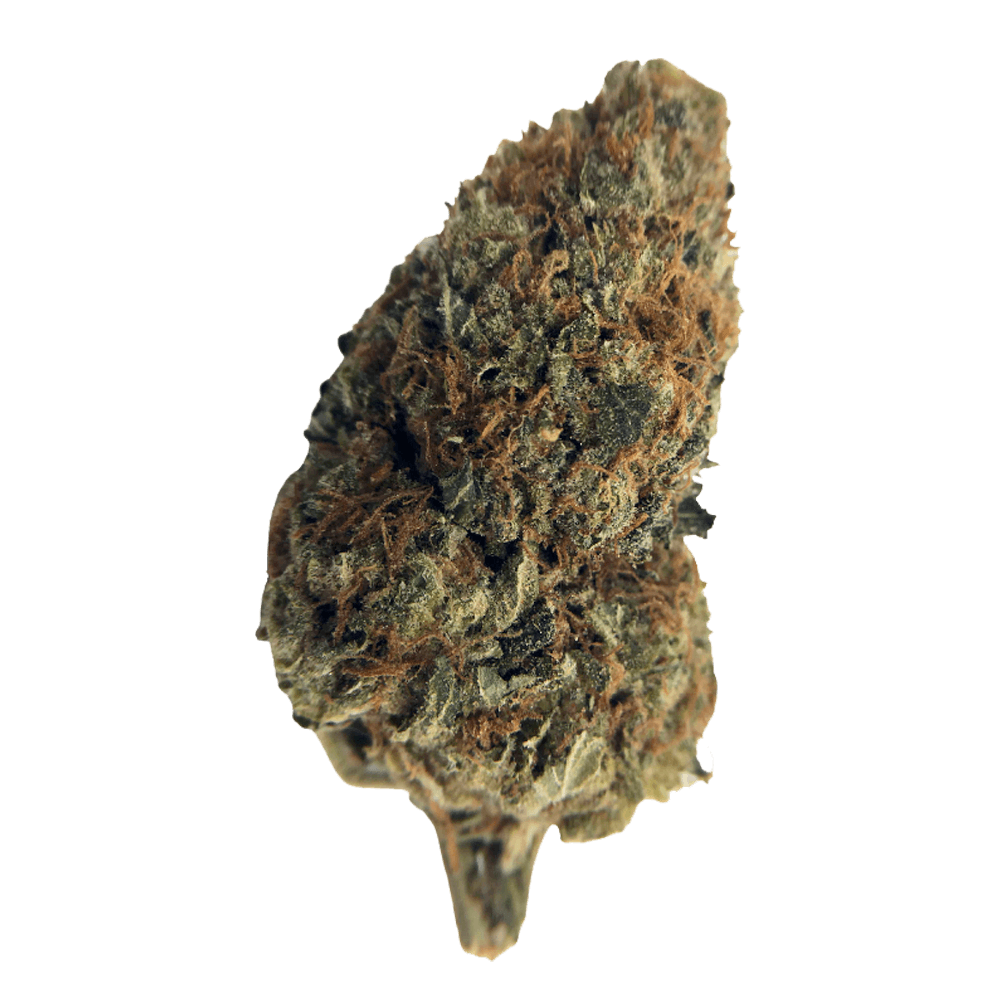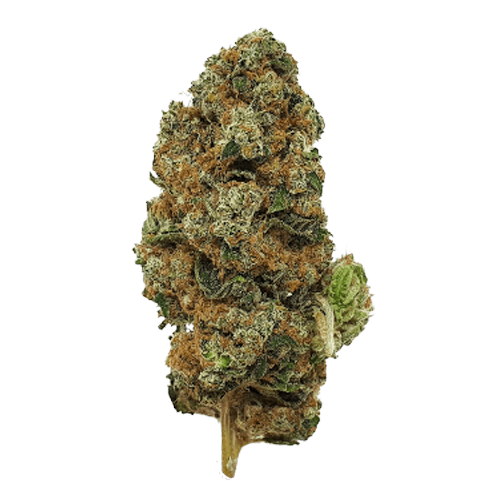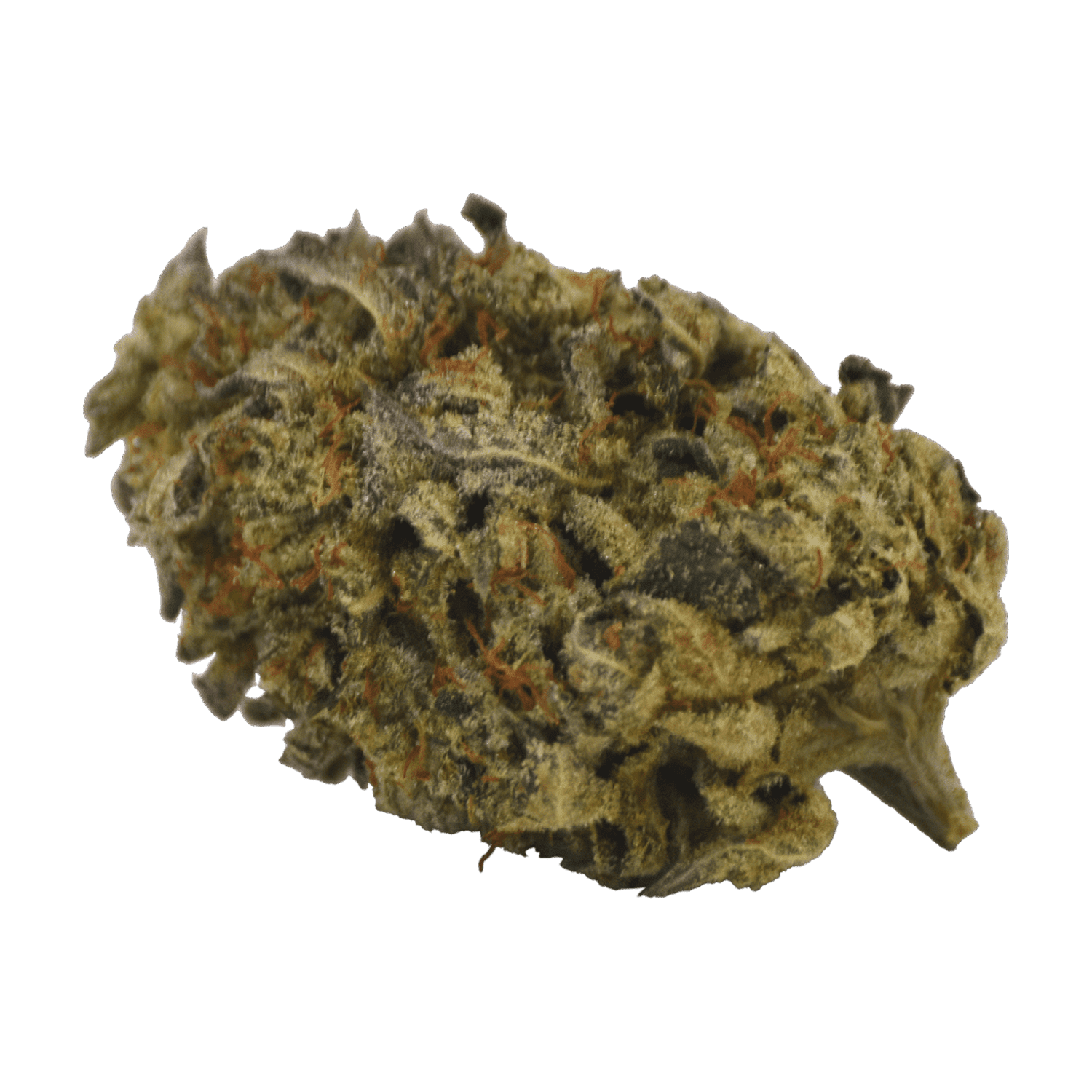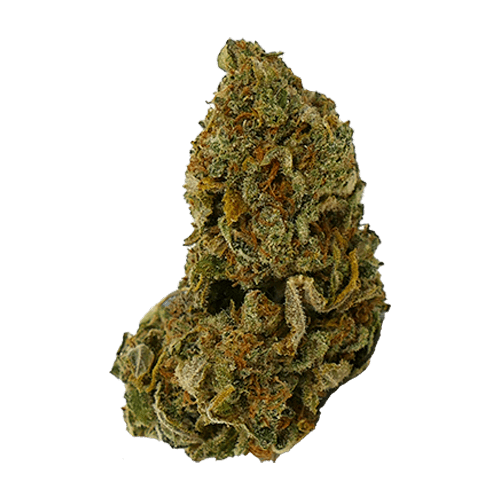Exploring the World of Humulene: The Scent, the Science, and the Significance

Introduction
Welcome to the fascinating realm of humulene, a key constituent in the ever-intriguing world of cannabis terpenes. As we embark on this aromatic journey, we’ll delve into the unique characteristics of humulene’s scent, its presence in nature, and its potential benefits. This discussion will shine a light on the ways in which humulene captivates both the scientific community and various industries, unveiling a wealth of opportunities arising from its distinctive aromatic profiles and terpene benefits.
Key Takeaways
- Humulene is an essential component in the diversified sphere of cannabis terpenes and imparts its own unique scent.
- Naturally present in a range of plants, humulene’s distinct aroma and set of benefits contribute to its commercial significance in various industries.
- From fostering our understanding of terpene chemistry to revealing the potential health and well-being applications, humulene opens doors for scientific exploration and commercial innovation.
- Pharmaceutical, aromatherapy, and brewing industries all reap the rewards of humulene’s versatile properties
- Understanding and appreciating the complexities of humulene, alongside other terpenes, allows for a more holistic approach to well-being and product development.
Unveiling Humulene: An Introduction to Its Unique Aroma
The humulene aroma is a distinctive and complex scent that can be found in a variety of plants and essential oils. Its notable characteristics include a mixture of earthy, woody, and spicy notes, which contribute significantly to the olfactory profiles of diverse botanical species. In this section, we will delve deeper into the intriguing world of humulene, with particular focus on its herbal scents and how this enigmatic aroma plays a vital role in plants, essential oils, and the hoppy fragrance commonly associated with beers.
“Humulene’s unique scent is defined by its earthy, woody, and spicy notes, making it an essential component in various plants and essential oils.”
One of the striking aspects of humulene’s aroma is its engaging hoppy fragrance, which is responsible for lending its characteristic scent to many well-loved beers. This association can be best appreciated by examining the presence of humulene in hops, a primary ingredient in beer brewing. Additionally, the scent profile of humulene can be detected in a wide range of essential oils derived from plants such as sage, cloves, and ginseng.
- Earthy notes: A raw, robust fragrance reminiscent of damp soil and rich foliage.
- Woody notes: Reminiscent of freshly cut lumber, forested areas, and bark.
- Spicy notes: Sharp and invigorating, with hints of pepper and warm spices.
These diverse scent characteristics combine in harmony to form an enchantingly herbal scent that is an essential player in multiple industries, such as aromatherapy, cosmetics, and the culinary arts. The table below presents examples of plants and essential oils that contain the captivating aroma of humulene:
| Plant/Herb | Essential Oil | Main Humulene Aroma Characteristics |
|---|---|---|
| Hops | Hops Essential Oil | Earthy, Hoppy |
| Sage | Sage Essential Oil | Woody, Herbal |
| Ginseng | Ginseng Essential Oil | Spicy, Earthy |
| Cloves | Clove Essential Oil | Spicy, Herbal |
In conclusion, the humulene aroma is an integral element that defines the olfactory profiles of various plant species, essential oils, and the distinct hoppy fragrance found in beers. Its earthy, woody, and spicy notes weave together an intricate blend of scents that allows humulene to serve as a vital component in the realm of aromatherapy, cosmetics, and culinary experiences.

Humulene Terpene: A Deep Dive into the Chemistry
As one of the key components in various aromatic profiles, humulene terpene is known for its unique earthy and woody scent. In order to understand its significance, it is essential to delve into its chemical structure and properties. Being a sesquiterpene, humulene has a more complex molecular form than monoterpenes, setting it apart in the realm of organic compounds. This section will explore the scientific aspects of humulene terpene, its molecular form, and its presence in nature.
Chemical Structure and Classification
The chemical structure of humulene offers insights into its properties and behavior. It is a cyclic sesquiterpene with a molecular formula of C15H24, and is composed of three isoprene units. The structure features a cyclohexene ring with two isopropyl groups and one trans-double bond, which gives it a particular arrangement in space.
The categorisation of humulene as a sesquiterpene stems from its larger and more complex structure compared to monoterpenes. While monoterpenes contain two isoprene units, sesquiterpenes consist of three. This distinction affects how humulene interacts with other organic compounds, and may influence its perceived aroma and therapeutic properties.
“Humulene is classified as a sesquiterpene due to its larger and more complex structure compared to monoterpenes.”
Synergistic Effects and Presence in Nature
Humulene is commonly found in the essential oils of various plants, including hops, sage, ginseng, and of course, cannabis. Its presence in these natural sources often occurs alongside other terpenes, as well as cannabinoids in the case of cannabis. This is where the synergistic effects of humulene come into play, as its interaction with other organic compounds can amplify or modulate the individual properties. For instance, the combination of humulene with other terpenes like caryophyllene and myrcene may contribute to an enhanced overall therapeutic effect.
- Hops: Hops contain significant amounts of humulene, contributing to the characteristic hoppy aroma of beer.
- Sage: This popular herb also contains humulene and is widely used for its medicinal and culinary properties.
- Ginseng: Humulene is present in ginseng, a revered herbal remedy for its potential health benefits and adaptogenic properties.
- Cannabis: Among the many terpenes found in cannabis, humulene also takes its noteworthy place, influencing the plant’s scent and potential therapeutic effects.
Given the chemical structure and complexity of humulene terpene, it is evident that its presence in nature and interaction with other organic compounds play a crucial role in shaping its overall properties. Gaining insights into the complexity of humulene can help further our understanding of its practical applications and potential benefits in various industries.
Humulene Cannabis Strains

AK-47

Banana Mac

Khalifa Mints

Stardawg
The Significance of Humulene Across Various Industries
As a versatile and highly valuable compound, humulene has found its way into an array of industries, resulting in a surge of interest in its potential applications and benefits. In this section, we shall discuss the pharmaceutical benefits of humulene, its anti-inflammatory properties, its role in aromatherapy, and its significance in the brewing industry.
– Pharmaceutical Benefits and Anti-Inflammatory Properties
One of the key reasons behind humulene’s growing popularity is its potential contribution to the world of medicine, particularly due to its purported anti-inflammatory properties. Researchers have discovered that humulene exhibits remarkable efficacy in reducing inflammation, both topically and systemically, making it a compelling candidate for the development of new therapeutic agents.
“Humulene, a naturally occurring sesquiterpene, has been shown to exhibit significant anti-inflammatory properties, leading to increased interest in its potential pharmaceutical applications.”
In addition to its anti-inflammatory effects, humulene has also been found to possess analgesic properties, further pointing to its potential as a natural pain reliever. This has spurred the pharmaceutical industry to explore the potential benefits of incorporating humulene into various medications and treatments.
– Aromatherapy
Another arena in which humulene is making its presence felt is aromatherapy. As a key component of essential oils derived from plants such as clove, sage, and ginseng, humulene contributes to the unique and captivating fragrances that are the cornerstone of aromatherapy practices. Its earthy, woody aroma is believed to have a soothing effect on the mind, generating a sense of balance, grounding, and relaxation.
- Anti-inflammatory support
- Analgesic potential
- Stress reduction
- Grounding and relaxation
– The Brewing Industry
As a primary contributor to the distinct hoppy flavor profile of beer, humulene plays a significant role in the brewing industry. The humulene present in hop cones is responsible for the characteristic bitterness and refreshing taste of several types of beer, such as IPAs and pale ales. Consequently, humulene has become an indispensable ingredient for brewers, enabling them to create unique and memorable flavor profiles.
| Type of Beer | Humulene Concentration |
|---|---|
| Indian Pale Ale (IPA) | High |
| Pale Ale | Medium to High |
| Stout | Low to Medium |
| Lager | Low |
| Pilsner | Low |
In summary, humulene is an immensely valuable compound with far-reaching applications and significance across numerous industries, ranging from pharmaceuticals to aromatherapy and brewing. Its unique aroma, anti-inflammatory properties, and widespread presence in nature underscore the potential for continued investigation and the development of innovative products and solutions.

Humulene in the Environment: A Natural Presence
Humulene’s occurrence in the natural world is critical to understanding its broader ecological significance. Found in a variety of plants species beyond cannabis, this terpene plays a crucial role in maintaining biodiversity and providing balance within various ecosystems. In this section, we will explore the natural prevalence of humulene, its ecological contributions, and the defense mechanisms facilitated by this remarkable compound in the plant kingdom.
Plants Rich in Humulene: A Brief Overview
Humulene is found in many plant species and contributes to their aromatic profiles. While cannabis is a well-known source of humulene, several other plants contain this compound in abundance. Here are some notable examples:
- Common sage (Salvia officinalis)
- Chinese ginseng (Panax ginseng)
- Black pepper (Piper nigrum)
- Common hops (Humulus lupulus)
- Virginia pine (Pinus virginiana)
Ecological Significance and Biodiversity
The presence of humulene in these diverse plant species is not a mere coincidence; it carries considerable ecological importance. In natural ecosystems, humulene contributes to the overall biodiversity and serves as a driving force behind the complex interactions between flora and fauna. It not only defines unique fragrances that attract pollinators, but also has the potential to protect the plants against predators, herbivores, and pests.
“Humulene’s presence in various plant species plays a vital role in maintaining biodiversity and promoting balanced natural ecosystems.”
Natural Defense Mechanisms Facilitated by Humulene
Plants containing humulene often exhibit a unique blend of odors that help deter various predators and pests. As a result, the presence of humulene strengthens the plants’ natural defense systems, reducing the need for artificial pesticides and contributing to ecological resilience. Let’s take a closer look at humulene’s role in some well-known plants:
| Plant | Defense mechanism |
|---|---|
| Common sage | Herbivore deterrence through strong aroma |
| Chinese ginseng | Protective response against pest infestation |
| Black pepper | Antimicrobial properties minimise pathogen risk |
| Common hops | Inhibition of pathogenic microorganisms |
In conclusion, humulene’s presence in diverse plant species is not only fascinating from a scientific standpoint but also holds ecological significance. As humulene contributes to natural defense mechanisms and supports biodiversity, it undoubtedly has a substantial impact on the natural ecosystems that surround us. With further research, we can expect to uncover even more about this intriguing terpene and its potential applications both in nature and beyond.
From Plant to Product: Humulene in Consumer Goods
As the demand for natural ingredients in the cosmetic and wellness industries continues to grow, humulene-infused products are emerging as a popular choice amongst consumers. Derived from plants such as hops, sage, and ginseng, the earthy and spicy aroma of humulene adds a unique appeal to products while also providing a range of therapeutic properties. This versatile terpene is being incorporated into a variety of consumer goods, gaining ground in the cosmetic industry through its use in natural fragrances and targeted treatments.
“Humulene not only contributes its distinct scent to various products but its potential health benefits too, making it highly sought-after in the world of natural ingredients.”
Some of the popular humulene-infused consumer goods in the market include:
- Skincare products with humulene as an active ingredient
- Therapeutic essential oils and diffusers
- Topical creams and ointments for pain relief and inflammation reduction

Humulene in the Cosmetic Industry
The cosmetic industry is witnessing a surge in products that contain humulene, thanks to its appealing natural fragrance and potential health benefits. It is quickly becoming a popular additive in various formulations, from skincare serums to aromatherapy blends.
For instance, humulene is known for its potential anti-inflammatory properties, making it a valuable ingredient in skincare products aimed at reducing redness or irritation. Additionally, the compound’s earthy, herbal scent is an attractive addition to natural fragrances, allowing for more diverse and sophisticated aroma profiles.
Humulene in Health and Wellness Products
Beyond the realm of cosmetics, humulene is also being harnessed in a range of health and wellness products. This versatile terpene can be found in a variety of topical creams, ointments, and essential oil blends, designed to offer a range of potential therapeutic benefits, particularly in addressing inflammation or pain.
Indeed, as humulene gains momentum in the natural ingredients space, more consumer goods can be expected to leverage its unique properties in the future, capitalising on its reputation as a valuable and earth-friendly resource.
| Product Category | Examples of Humulene-Infused Products |
|---|---|
| Skincare | Facial serums, moisturizers, anti-aging creams |
| Natural Fragrances | Perfumes, colognes, home scents |
| Therapeutic Essential Oils | Blended essential oils, massage oils, diffuser oils |
| Topical Treatments | Pain relief creams, anti-inflammatory ointments, soothing balms |
By incorporating humulene into various consumer goods, manufacturers are catering to the growing demand for natural ingredients in the cosmetic and wellness sectors. With its unique aroma and potential health benefits, humulene is set to play an increasingly prominent role in the world of consumer products
Conclusion
As we have seen, understanding humulene and its intricate role in nature and industry can lead to numerous benefits and applications across various sectors. From its unique aroma to its potential health benefits, humulene is a key player in the fascinating world of terpenes. By delving into the terpene exploration, we can better understand the complex relationship between the constituents of nature and their influence on human holistic well-being.
Future research into humulene, other cannabis terpenes, and their synergistic effects can pave the way for innovative discoveries in the health and wellness industry. New lines of humulene-infused products that cater to an ever-growing demand for natural and sustainable solutions can significantly impact our lives.
As we continue to explore the boundless potential of humulene and other terpenes, one cannot help but marvel at nature’s abundant gifts. The ongoing pursuit of knowledge in this domain reinforces the importance of preserving the biodiversity as a rich wellspring of scientific and commercial opportunities. With our ability to harness the power of nature, better applications across various industries can lead to improved holistic well-being and a brighter, more sustainable future for all.